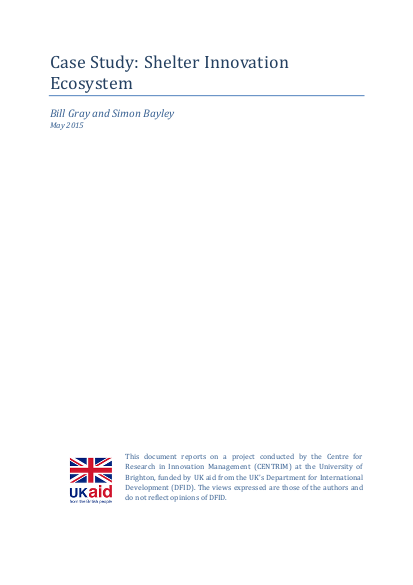
This case study presents an analysis of the innovation ecosystem within the shelter sub-sector of humanitarian response1. It is based upon twenty-five in-depth interviews with administrators, practitioners, and researchers, all of whom have long and deep experience of working in the sector, as well as both published and unpublished secondary source material. Two main conceptual frameworks underpin the analysis. The first is an idealised model of system dynamics of innovation. This identifies the different stages and activities typically involved in innovation: recognition of need; generation of new ideas; creation of plausible solutions; development and implementation and; diffusion. The second framework, referred to as the “Rs framework” throughout HIE project material, seeks to uncover the detailed factors influencing how this system operates across several fields: resources, roles, relationships, rules, routines, and results. Taken together, these frameworks allow a characterisation of the main elements of the shelter ecosystem, and assessment of the influences that either facilitate or inhibit the successful movement of innovations through the various stages of the innovation process. The study presents two overarching and interrelated findings relating to the predominant focus of innovation in contemporary humanitarian shelter. Firstly, that innovation in shelter is today more likely to be concerned with improvements in process than it is about the introduction of new products. And secondly that, because of urbanisation and the increasingly spatial nature of disaster response and recovery, innovation in shelter is increasingly focused more on facilitation than with direct action. This is because, although the humanitarian endeavour’s primary concern is the saving of lives, quality humanitarian shelter programming as presently understood has explicit links to issues such as long-term post-disaster developmental needs and disaster-proofing as well as the interaction of those affected by displacement with their communities, public services and the built environment.
